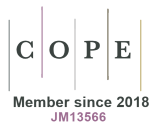FriP cheese: the best cheese-making tradition for patients with impaired renal function
DOI:
https://doi.org/10.33393/gcnd.2025.3583Keywords:
Calcium carbonate, Cheese, CKD, Dialysis, FriP, Hyperphosphatemia, PhosphorusAbstract
Patients with impaired renal function have several dietary limitations, including cheese for both its high phosphorus
and sodium content. However, cheese is an important component of the European diet, and its limitation,
together with the many other deprivations, negatively affects patients’ quality of life and nutrition. We
have developed a cheese-making process characterized by the enrichment of milk with calcium carbonate to
provide patients with a nutritional opportunity while improving their phosphorus control. The procedure can be
applied to any type of milk and cheese. The derived products (identified by the designation of FriP) have optimal
palatability, being indistinguishable from regular cheese. FriP cheese has a very low concentration of absorbable
phosphorus and a low sodium content. FriP cheese has proven its efficacy in lowering phosphorus absorption in
both healthy subjects and in chronic kidney disease (CKD) patients, as well as its safety as to calcium metabolism.
Herein, we share the story of how FriP cheese has been developed to become an additional resource for overcoming
some of the dietary limitations of patients with CKD towards better nutrition, phosphorus control, and
quality of life.
The present is a story of neonatal medicine coming to the support of adult patients! In nephrology, knowledge typically stems from the adult setting prior to falling upon the pediatric one. On the contrary, the development of FriP cheese has started at the neonatal bedside to find its best application in the adult nephrology setting.
We are all well aware that dietary interventions are the frontline treatment for chronic kidney disease (CKD) with impaired renal function. However, since dietary restrictions heavily impact the quality of life, patients’ compliance with our prescriptions is often inadequate or even poor.
Approximately 65% of pediatric nephropathies with impaired renal function are congenital (1). These babies obviously cannot refrain from milk intake. However, the high content in phosphorus of this essential food (human milk: 18 mg/dL, formula: 25-35 mg/dL, cow milk: 95 mg/dL) likely causes severe hyperphosphatemia within days since birth. High serum phosphorus level, during pediatric age, even more than during adulthood, can have serious consequences for the future cardiovascular morbidity and mortality, ultimately undermining the long-term success of the entire treatment program; for example, at 40 years of age, cardiovascular mortality among patients who underwent dialysis during childhood, can be as high as 40% (2,3).
Nowadays, pediatric nephrologists can count on special formulas prepared by industry with very low phosphorus content (as well as protein and potassium) to feed infants with CKD. However, in the past and, to some extent, even today, the issue of the high phosphorus content in milk for newborns and infants with CKD was addressed by adding powdered calcium carbonate to milk to induce phosphorus chelation. The dose of calcium carbonate to be added to the baby bottle ranges from 0.5-1.5 mg/mL of milk. As calcium carbonate is tasteless and odorless (as well as colorless in milk), not only is the pre-treated formula readily accepted by infants, but it also improves the bioavailability of the chelating agent because dispersed in the food. Moreover, the chelation process starts even before food is eaten, with positive drawbacks on efficacy.
This very same technique of milk manipulation has been successfully applied to milk intended for cheese production, with excellent results in terms of both organoleptic properties (4) and efficacy in reducing patients’ phosphatemia (5). This technique can be applied to the production of any of the more than 1000 different types of cheese available in the World, thereby it can potentially satisfy even the needs of the most demanding patients. In addition, the procedure, per se, is very inexpensive; thus, it does not significantly impact the price to the consumer.
The addition of calcium carbonate does not interfere with the cheese-making process; on the contrary, it even facilitates it; for this reason, calcium supplementation is already used by many cheesemakers as an adjuvant whenever the milk is poor in mineral content. During the cheese-making process and in the subsequent maturation and seasoning phase, the carbonate evaporates as carbon dioxide, providing the FriP cheese with characteristic “eyelets” (4). The excess of calcium binds to phosphorus, and both minerals precipitate in an insoluble salt (calcium phosphate) that cannot be absorbed by the intestinal mucosa and will be eliminated with feces. Therefore, FriP products are not “free of phosphorus” as the name might suggest, rather are free of absorbable phosphorus.
FriP cheese (compared to regular products) was initially tested on healthy volunteers to document its efficacy and, more importantly, its safety. In greater detail, it was decided to make sure that its regular, long-term consumption does not expose subjects to metabolic alterations. The only difference observed among healthy subjects, regularly eating standard cheese and an equivalent FriP cheese for a 3-month period, was a 30% reduction in urinary phosphorus excretion. Notably, phosphatemia, calcemia, ionized calcium, and calciuria remained unchanged. In particular, calciuria, as determined in multiple (n: 10) samples over the study period, was not different both as mean excretion and as number of events of hypercalciuria defined as urinary Ca excretion>4 mg/kg/day or uCa/uCr ratio >0.25 mg/mg (Table 1). The observation that FriP does not alter the calcium-phosphorus metabolism in healthy individuals was important to confirm that it can be safely consumed by whoever, thus avoiding the need for differentiating foods consumed by patients and household members. This is an additional contribution of the FriP project to the normalization of patients’ life.
The organoleptic properties were further investigated by blind, professional testers: FriP cheese actually was indistinguishable from an equivalent standard product (4). Finally, FriP cheese was tested in a cohort of patients on dialysis. Sixteen patients on hemodialysis (thrice weekly) were studied in a crossover study design, and the results showed that the increase in phosphatemia between subsequent dialysis sessions was significantly lower when patients had consumed FriP cheese compared with a standard product, without any difference in calcium metabolism. The change in inter-dialytic phosphatemia with FriP cheese was also lower than that without any cheese consumption at all, as it was per study design during the run-in period (Figure 1). FriP products that are now available in different types from several producers in Italy and Switzerland are being tested in predialysis patients (CKD stage III-IV).
| Regular Product Median (IQR) | FriP Cheese Median (IQR) | p | |
|---|---|---|---|
| Female/Male* | 10/4 | 8/6 | ns |
| Age (yrs) | 47.9 (16.6) | 43.0 (13.1) | 0.400 |
| Weight (kg) | 67.4 ( 13.6) | 76.6 (29.7) | 0.302 |
| Product consumption (gr/kg/wk) | 2.8 (0.88) | 2.4 (1.48) | 0.707 |
| SBP (mmHg) | 121 (9.9) | 118 (11.4) | 0.367 |
| DBP (mmHg) | 76 (9.9) | 73 (10.8) | 0.450 |
| Total Ca(mg/dL) | 9.31 (0.29) | 9.27 (0.19) | 0.631 |
| iCa (mmol/L) | 1.23 (0.029) | 1.23 (0.026) | 0.935 |
| sCr (mg/dL) | 0.85 (0.15) | 0.89 (0.16) | 0.660 |
| Urea (mg/dL) | 33 (8.5) | 35 (7.3) | 0.467 |
| Alkaline Phospphatase (UI/mL) | 69 (13.8) | 67 (16.5) | 0.668 |
| PTH (pg/mL) | 21.8 (6.5) | 19.8 (8.5) | 0.507 |
| Albumin (gr/dL) | 4.5 (0.26) | 4.5 (0.23) | 0.872 |
| sP(mg/dL) | 3.52 (0.65) | 3.39 (0.6) | 0.573 |
| Triglycerids (mg/dL) | 83 (25.0) | 83 (32.5) | 0.981 |
| Total Cholesterol (mg/dL) | 208 (37.3) | 180 (35.9) | 0.054 |
| HDL Cholesterol (mg/dL) | 78 (21.3) | 75 (29.4) | 0.760 |
| LDL Cholesterol (mg/dL) | 125 (28.8) | 108 (31.7) | 0.154 |
| uNa/uCr Ratio (mEq/mg) | 1.16 (0.19) | 1.28 (0.27) | 0.193 |
| uCa (mg/kg/day) | 3.21 (1.34) | 3.32 (1.43) | 0.679 |
| uP(mg/kg/day) | 13.4 (2.4) | 10.5 (3.4) | 0.014 |
| Episodes with uCa>4(mg/kg/day)* (Events/total number of determinations) | 16/50 | 18/51 | ns |
FIGURE 1 -. Inter-dialysis increase in serum phosphorus (Delta P) in 16 patients on chronic kidney replacement therapy during the run-in period (usual diet), and when exposed to regular cheese and FriP cheese (modified from reference 5).
Another important characteristic of FriP cheese, which enhances its suitability for kidney patients, is its reduced NaCl content compared to an equivalent standard product. Commercially available cheeses can have NaCl concentrations ranging from 500 to 5000 mg/100 g. Since in FriP cheese the added calcium carbonate already provides an enhanced salty taste, its salt content is 30% lower than that of regular cheese. Indeed, in the study on dialysis patients, we did not observe any significant difference in the increase in interdialytic weight gain or in blood pressure.
In conclusion, calcium carbonate-enriched cheese is safe in healthy subjects and efficacious in CKD patients. This novel, functional food may help to overcome some of the nutritional limitations of the many patients with impaired renal function: it is estimated that 6.4% of the general population has CKD (6). We expect that FriP products may also improve patients’ compliance with phosphorus binders, reduce the need for drugs while improving phosphorus control, nutrition, and patients’ quality of life.
Other information
Corresponding author:
Maria Cristina Mancuso
email: mariacristina.mancuso@policlinico.mi.it
Disclosures
Conflict of Interest: FriP cheese is a registered patent of Fondazione IRCCS Ca’ Granda, Ospedale Maggiore Policlinico.
Financial support: This research received no specific grant from any funding agency in the public, commercial, or not-for-profit sectors.
References
- Ardissino G, Daccò V, Testa S, et al. ItalKid Project. Epidemiology of chronic renal failure in children: data from the ItalKid project. Pediatrics. 2003;111(4 Pt 1):e382-e387. PMID:12671156 https://doi.org/10.1542/peds.111.4.e382 PMID:12671156 DOI: https://doi.org/10.1542/peds.111.4.e382
- Wühl E, van Stralen KJ, Verrina E, et al. Timing and outcome of renal replacement therapy in patients with congenital malformations of the kidney and urinary tract. Clin J Am Soc Nephrol. 2013;8(1):67-74. PMID:23085722 https://doi.org/10.2215/CJN.03310412 PMID:23085722 DOI: https://doi.org/10.2215/CJN.03310412
- Dégi A, Kerti A, Kis E, et al. Cardiovascular risk assessment in children following kidney transplantation. Pediatr Transplant. 2012;16(6):564-576. PMID:22694162 https://doi.org/10.1111/j.1399-3046.2012.01730.x PMID:22694162 DOI: https://doi.org/10.1111/j.1399-3046.2012.01730.x
- Tidona F, Francolino S, Ghiglietti R, et al. Production, composition, and calcium and phosphorus in vitro gastrointestinal digestibility of free phosphate (FriP) Caciotta cheese with a high calcium/phosphorus ratio. J Dairy Sci. 2025;108(6):5732-5740. PMID:40221040 https://doi.org/10.3168/jds.2024-26132 PMID:40221040 DOI: https://doi.org/10.3168/jds.2024-26132
- Ardissino G, Matta R, Patricelli M, et al. Calcium carbonate-enriched cheese to improve nutrition, compliance and phosphorus control in patients on kidney replacement therapy. J Nephrol. 2022;35(1):305-309. PMID:34185278 https://doi.org/10.1007/s40620-021-01102-1 PMID:34185278 DOI: https://doi.org/10.1007/s40620-021-01102-1
- De Nicola L, Donfrancesco C, Minutolo R, et al. ANMCO-SIN Research Group. Prevalence and cardiovascular risk profile of chronic kidney disease in Italy: results of the 2008-12 National Health Examination Survey. Nephrol Dial Transplant. 2015;30(5):806-814. PMID:25523453 https://doi.org/10.1093/ndt/gfu383 PMID:25523453 DOI: https://doi.org/10.1093/ndt/gfu383











